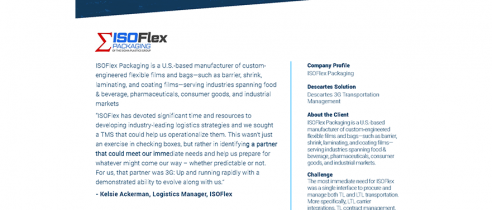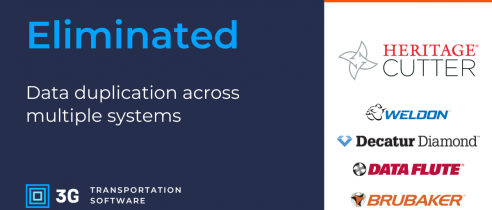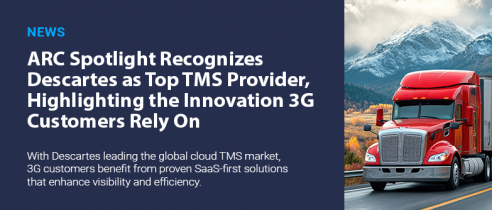Blog
How Freight Shipment Tracking Can Help Boost Your Business
Updated on September 18, 2024
In this era of globalization, the advancement of technology has made organization’s more efficient. Doing business beyond the borders of your home country is now easier than ever. Therefore, commercial freight and cargo shipping is now a multibillion-dollar industry.
If you happen to be a company that needs to send or receive shipments, you might want to consider freight shipment tracking. The ability to track shipments offers many tangible benefits. Let’s dive in to find out more.
What is Freight Shipment Tracking and How Does it Work?
Before we dive into how freight tracking can help your business, let’s look at the basics. This will give you a clear understanding of how it works.
Tracking Terminology
Understanding tracking statuses is key to managing deliveries. Common terms like “In-Transit,” “Out for Delivery,” and “Delivered” guide users through each phase of shipment, ensuring they can anticipate timelines and avoid delays.
At its core, standard freight tracking is exactly what it sounds like. It is the real-time tracking of cargo shipments. Companies (and customers) can know exactly where specific cargo is during the shipping process. Freight tracking can be done for both international and domestic freight. It can be broken down into two types:
Inbound Tracking: Inbound tracking is the tracking of any kind of shipment for businesses. These can be anything that businesses use, from raw materials to components to finished products.
Outbound Tracking: There is also outbound tracking. This is more focused on the customer side. Businesses can track the shipment that is sent to the customers. On the other hand, customers themselves can track where their package is at all times.
There are many benefits that come with proper tracking of freight shipments. Two critical benefits revolve around efficiency and data. Two of the most important things for any corporation in the 21st century.
Important Freight Tracking Terms You Should Know
TMS
TMS stands for transportation management system or software. Freight tracking today uses high-tech software to keep track of all your freight shipping services in real-time. It can also help you optimize your shipping processes by choosing the right carrier for you.
Pro Number
These are essentially the standard industry tracking numbers. Carriers will assign a shipment pro number when it is picked up. The shipment’s pro number is an essential piece of information in the tracking process and in determining shipment status.
Shipment Reference Number
A reference number is used to identify a particular shipment. It is necessary to avoid any mistakes in logistics. A shipment reference number can be any number. Companies can assign customer numbers or even a bill of lading.
Freightquote BOL
The Freightquote Bill of Lading (BOL) is essential for managing shipments and ensuring timely tracking updates. This document serves as a receipt and includes details like shipper information, carrier details, and the shipment’s final destination.
Tracking Technologies
Carriers use various technologies such as GPS, RFID, and real-time software updates to provide accurate shipment visibility. These systems enhance the tracking process by offering immediate status updates and predicting delivery times.
Carrier Information
Freight brokers often partner with multiple carriers, each offering different services and tracking options. Understanding a carrier’s tracking capabilities ensures more efficient communication and planning for any potential delays or issues during transit.
Unimodal vs. Multimodal vs. Intermodal Transportation
Unimodal transportation uses one mode of transport, while multimodal combines two or more modes under a single contract. Intermodal also involves multiple modes but under separate contracts. These methods impact shipment costs, speed, and tracking complexity.
Freight Forwarder Role
Freight forwarders manage the entire logistics process, including documentation, customs clearance, and storage. They ensure smooth shipping, handle legal requirements, and track goods across international borders.
LTL and FTL Shipping
Less Than Truckload (LTL) shipping consolidates smaller shipments, making it more cost-effective but potentially slower. Full Truckload (FTL) is faster and suited for larger shipments that require an entire trailer but comes at a higher cost.
FedEx Delivery Manager
FedEx Delivery Manager provides users with real-time tracking, delivery rescheduling, and notifications. It allows for greater control over shipments, offering visibility and updates throughout the entire delivery process.
FedEx Surround
FedEx Surround offers advanced tracking features, including predictive delay analysis and priority adjustments. By utilizing real-time data and analytics, it helps businesses proactively manage potential disruptions and improve delivery accuracy.
The Benefits Of Freight Tracking For Businesses
What are the benefits of freight tracking?
There are quite a lot of hard-to-ignore benefits for businesses. They range from process efficiency to satisfying customer demand. Both of which are pretty important if you want to compete in this hyper-competitive landscape.
Increased Efficiency: One of the largest benefits of cargo tracking is increased efficiency. As a business, you want to increase the efficiency of your processes. Tracking will help your organization find optimal routes and lower costs. The American Trucking Association says that the industry is estimated to see a shortage of drivers. With freight carriers being critical to providing freight services, the ability to track freight reliably will only grow in importance. Whether you are shipping by land, air, or sea, having instant freight tracking information at your disposal will help you make better data-driven decisions and better realize the impact logistics has on your bottom line. With advanced TMS software, you can ensure you get the best rates and manage your freight services efficiently. This will result in lower operational costs and also faster shipping.
Better Customer Experience: Customer expectations are growing more demanding. And if you fail to satisfy, you will be left behind by your competition. Freight tracking allows you to provide information throughout the freight shipping process and accurate arrival times to customers, thus reducing the demand on the customer service department. Additionally, wrong address deliveries are reduced, risk of lost packages decreases, and final destination information delays are reduced, thus making the entire shipping process more efficient. Providing tracking options to customers used to be a luxury but now it is a necessity to stay competitive.
Accountability: A lot of things can go wrong when you are shipping cargo over large distances. The ability to provide tracking ensures that the right people are held accountable. And everything goes smoothly. A freight tracking number allows you to keep tabs on it at all times. The data is always there. You can tell who received the shipment, and how long it took to arrive using the freight tracking number and related software. And if a shipment veers off course, you can receive tracking updates in real time. This gives you more control over your logistics. Nothing is left “in the wind.”
Manage Delays and Reroutes: You can also manage freight delays and reroutes. When a package is delayed you will receive updated shipment tracking information. This will give you enough time to take action and allow you to come up with a solution. This way, you can keep freight delays and reroutes to a minimum. It also has the overarching benefit of greater satisfaction and process efficiency.
How To Choose The Right Freight Shipment Tracker For Your Requirements?
Businesses vary a lot. The type of freight tracking software you need will depend on how your organization operates and the industry you reside in. It is important to factor in certain criteria when choosing a TMS.
Area of operation: This is one of the most important ones. You need to ensure that the software provides services in your area of operation. If you are a multinational corporation with global logistical needs, similarly capable software is needed.
Application programming interface: Does the software have a robust API that can be used for integrating with internal systems? This could be an essential need if you have systems that don’t have standard ways or connecting with newer systems.
Real-time tracking: Real-time tracking is one of the most basic features that all good TMS software should have. It will provide you real-time data that will help you make faster and more accurate decisions.
Intuitive UI: While tracking software has lots of features. The user experience should be intuitive. Otherwise, you could be creating more problems than you’re solving. Employees would need to extended training. Good UI design and ease of use are crucial.
Modes and payment options: Multiple modes and payment options make it flexible for your business. Look out for different payment options.
Branded tracking page: Your company’s brand is one of the most important assets. When giving tracking options to your customers, ensure that your TMS allows branded tracking pages.
Latest technology: Use TMS software that is technology forward. A lot of TMS software is simply out-of-touch with current needs. It might not offer robust features and can be susceptible to reliability or security issues.
Customer service: Lastly, choose a service that has proper customer care. You need to be able to trust your tracking software provider to be there for you when something goes wrong unexpectedly.
Tips For Using Freight Shipment Tracking To Improve Operations
You need to remember that tracking software is just a tool. How you choose to use that tool is just as important. Below are tips to help you harness the full potential of freight tracking to improve operations.
-
- Make sure to document all processes. This will help keep things efficient.
- Use the data you gather to make concrete changes to improve your process
- Package your shipments the right way. Quick arrival always takes priority.
- Be proactive with the software you are using
FAQs About Freight Shipment Tracking
What are the types of cargo?
There are 5 types of cargo. Dry bulk, liquid bulk, Container cargo, Ro-ro, and Breakbulk.
Is freight the same as shipping?
Freight and shipping are sometimes used interchangeably. But there is a slight difference. Freight is usually referred to as a large volume of cargo. It is bulk transportation. Whereas shipping refers to smaller quantities that don’t necessarily meet the capacity needs requirement.
Logistics is very complicated. Can the software really make it more efficient?
Yes. TMS software uses optimization algorithms that ensure efficiency throughout the entire process. It works efficiently within constraints to come up with the most optimal course of action.
Comprehensive Guide to Freight Shipment Tracking
When implemented correctly, freight tracking is a key cog in the logistics services wheel. To think that something as simple as a tracking number can provide so much value across the entire logistics system, all the while increase efficiency and lowering costs.
In today’s globalized world, freight tracking is essential for efficient logistics management. With advanced tracking technologies and real-time updates, businesses can monitor their shipments, ensuring transparency and accountability. Whether using a PRO number for LTL shipments, employing TMS software, or leveraging tools like FedEx Delivery Manager and FedEx Surround, tracking offers crucial insights and control. Integrated with ERP systems, it further streamlines operations. Proper training and implementation of these systems maximize their potential, driving efficiency and enhancing customer satisfaction.







